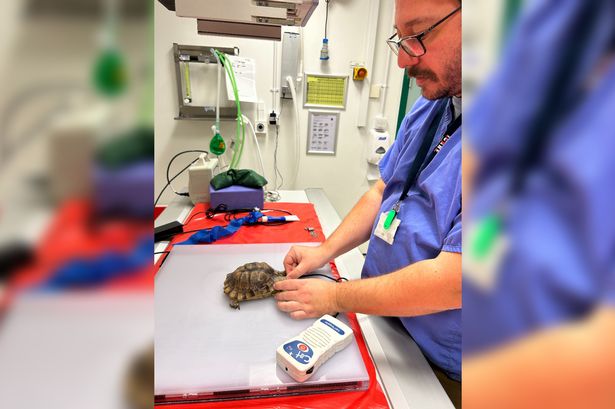As the popularity of "exotic" pets rises, so too does the need for vets specially trained to look after them.
That's where these ambitious animal-lovers step in – taking in all manner of pets, whether furry, feathered or scaly. Leopard geckos, corn snakes, tortoises, bearded dragons and ball pythons are some of best-known exotic pets to be found in the UK.
But did you know that some more common pets – such as rabbits – are also officially classed as "exotic"? According to Dr Filipe Martinho, head of exotics at the University of Liverpool Small Animal Practice, any pet that is not a cat or dog is likely to require an exotic specialist – from rats and hamsters to marmoset monkeys.
READ MORE: Man says 'it's not what everyone thinks' as he shares reality of winning TV game show
READ MORE: Win a £750+ money-saving laundry package from Indesit!
He said: "The majority on our books are rabbits, guinea pigs and pet rats, and a lot of reptiles, mostly tortoises and bearded dragons. We have had less common reptile species, lizards, snakes; we've had frogs; and we do see pet fish like koi carp and goldfish quite often. Those are the ones people least expect to be seen at the vets.
"We are able to do pretty much the same things as any other vet, including imaging, x-rays, scans, blood samples, and surgery. For fish, we do lump removals, treating crusts on their skin and things like that. Quite often they get things stuck in their mouths, which leads to a common surgical procedure."
Filipe, 45, joined the University of Liverpool three years ago, and now teaches up and coming young vets how to care for less common pets. He said: "As a teenager I kept a number of reptiles myself and other exotic pets, so I was used to those species. I was also into wildlife volunteering, so it felt natural to go into exotics. I love the diversity of things we see each and every day.
"We are still growing in terms of patients we see. It's fairly popular, and people – at least in urban areas – are moving from cats and dogs to some exotic pets. They may find them easier to look after, if they're smaller and more adjusted to living in an apartment. There's a few common frog species: White's tree frogs, African clawed frogs, Pacman frogs. For reptiles it's mostly tortoises, bearded dragons, leopard geckos, and a few snakes like royal pythons and corn snakes."
The popularity of exotic pets has grown in recent years. The RSPCA estimates there are currently around 1.8m reptiles, amphibians and invertebrates, 1.3m indoor birds, and more than 100m ornamental fish being kept as pets in UK households. Unfortunately, these animals are more at risk of being deprived of basic needs, as many inexperienced owners have no idea how to properly look after them.
RSPCA CEO Chris Sherwood said: "[In 2020] the RSPCA handled more than 6,000 calls relating to almost 23,000 exotic pets – from lizards and snakes to raccoon dogs and monkeys. Many of the problems we deal with are the result of a lack of understanding of how to care for exotic pets. These animals have the same, complex needs as their wild kin, but it can be extremely difficult to fulfil those requirements in a domestic environment and that leads to suffering."
Some of the most unusual animals people are still legally allowed to keep as pets in the UK include marmosets, capybaras, African pygmy hedgehogs, fennec foxes, and even octopi.
Filipe said: "A lot of exotics can be quite long lived, especially tortoises and even parrots, which can live for decades. With an exotic species, you have to create a unique habitat in your own house. You always have a piece of nature with you.
"I will say that, from my experience, exotic pet owners care about their pet no matter what, just as a dog or cat owner does. They worry about them, they grieve for them when they pass away, because they build that bond."
The Liverpool Daily Post newsletter delves into the biggest stories on Merseyside

